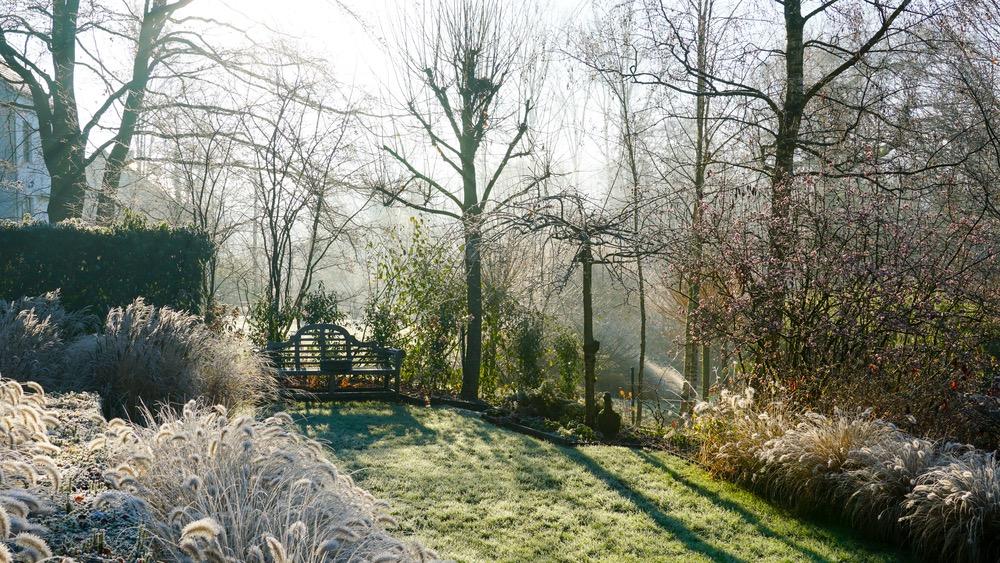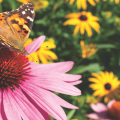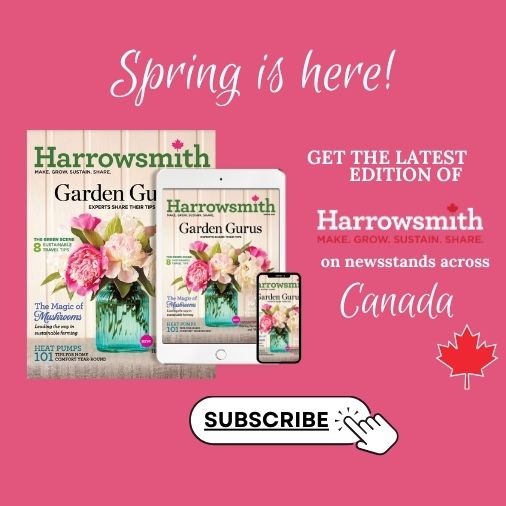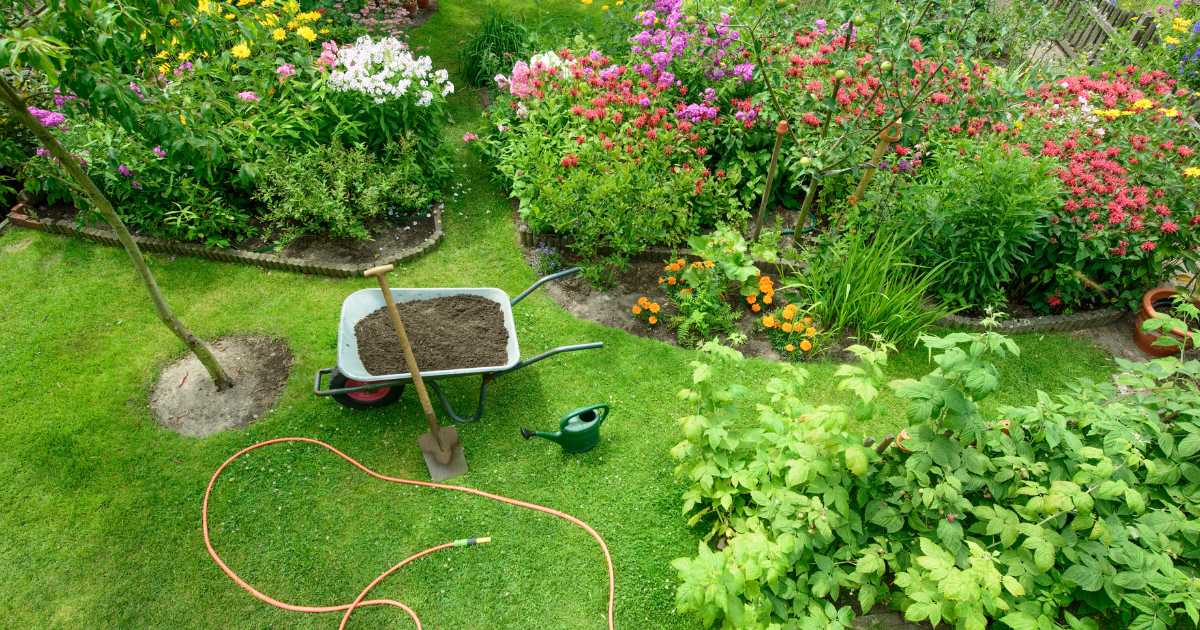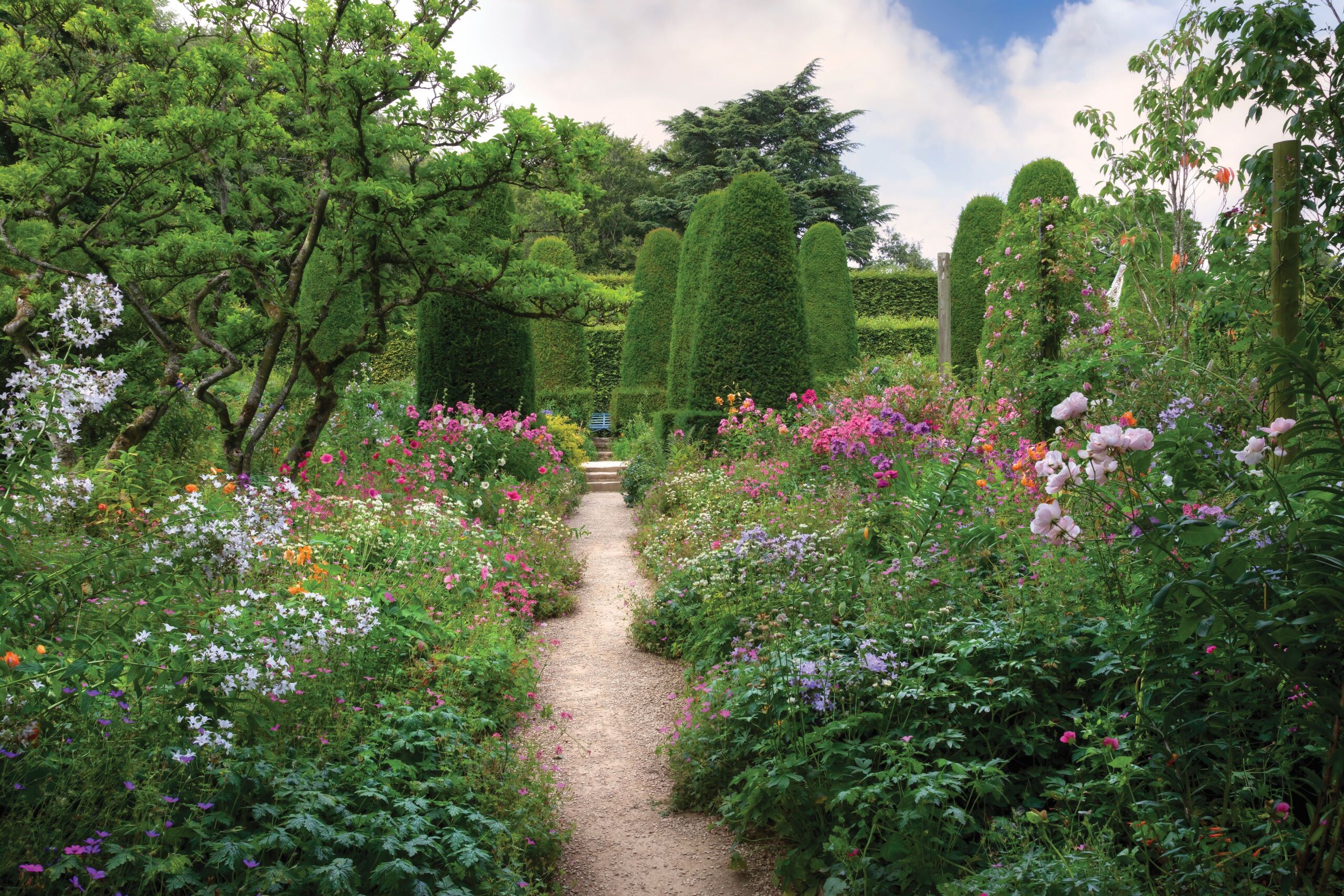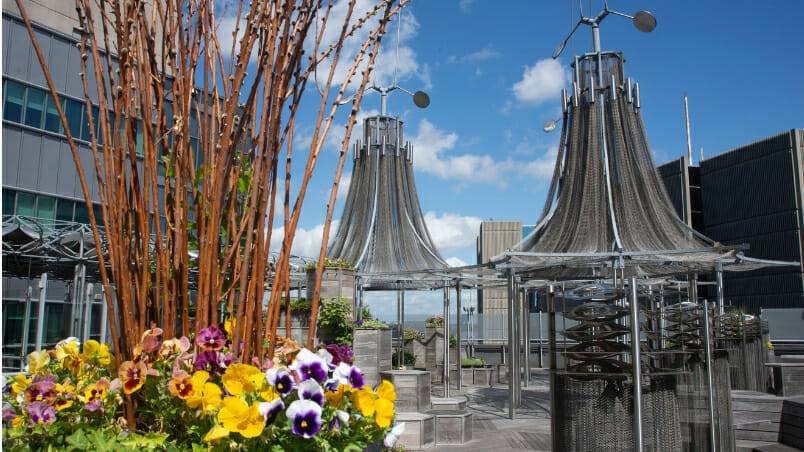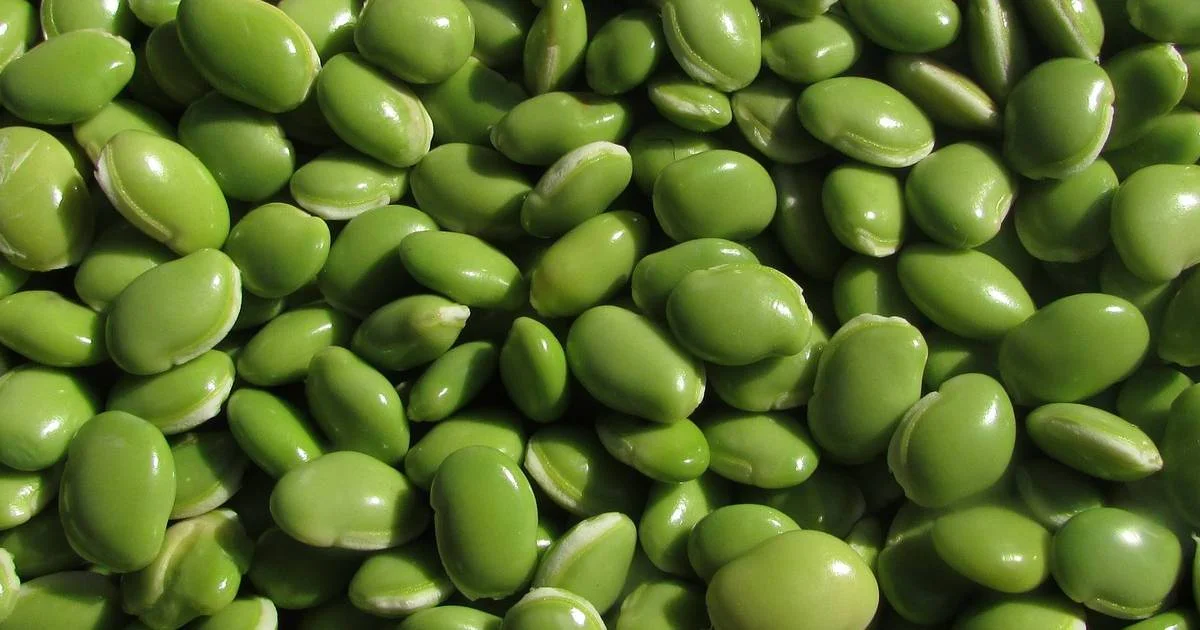Gardening for winter interest is becoming increasingly popular as our changing climate brings us outside more often during the winter months. Here’s how to enjoy and enhance your landscape’s natural beauty.
There are plenty of options to enjoy the natural interest in a winter garden no matter where you live, and there’s no doubt that the best place to draw inspiration from is Canada’s West Coast — British Columbia has some of the most spectacular gardens in the world! And many of those phenomenal gardens are the work of Paul Sangha, principal landscape architect at Paul Sangha Creative, an internationally recognized landscape practice in Vancouver. Sangha has designed gardens all around the world and has an exceptional vision for uniting the landscape, built form and site. There is no need to settle for an empty, desolate outdoor space. “All the elements are available to you,” says Sangha, and there’s no better time to start building on these design features than now. Harrowsmith caught up with Sangha to get some tips on how to design a landscape for winter, whether you are gardening in the countryside, the city or the suburbs. Here are the seven top design principles to keep in mind.
1. Plant for Structure
As we spend less time outdoors in winter, positioning your garden beds where they can be seen from the inside is a way to enjoy the picture you have created. Frame your views with tall deciduous trees that will create the structure of your garden. Bur oaks (Quercus macrocarpa) and white oaks (Quercus alba) are long-lasting sturdy trees, while varieties of beech (Fagus) often keep their leaves in winter once established, and a specimen like the Kentucky coffee tree (Gymnocladus dioicus) is a unique choice, less seen on city boulevards.
Large coniferous trees like pine, spruce and cedar stay green all year round and will hold the shape of
the landscape. “Think of evergreen trees and shrubs as the foundation of the winter garden,” recommends Sangha, who advises approaching your planting plan with a variety of evergreens in all shapes and sizes. “And don’t forget about broadleaf evergreens like boxwood, pieris and hollies,” he adds.
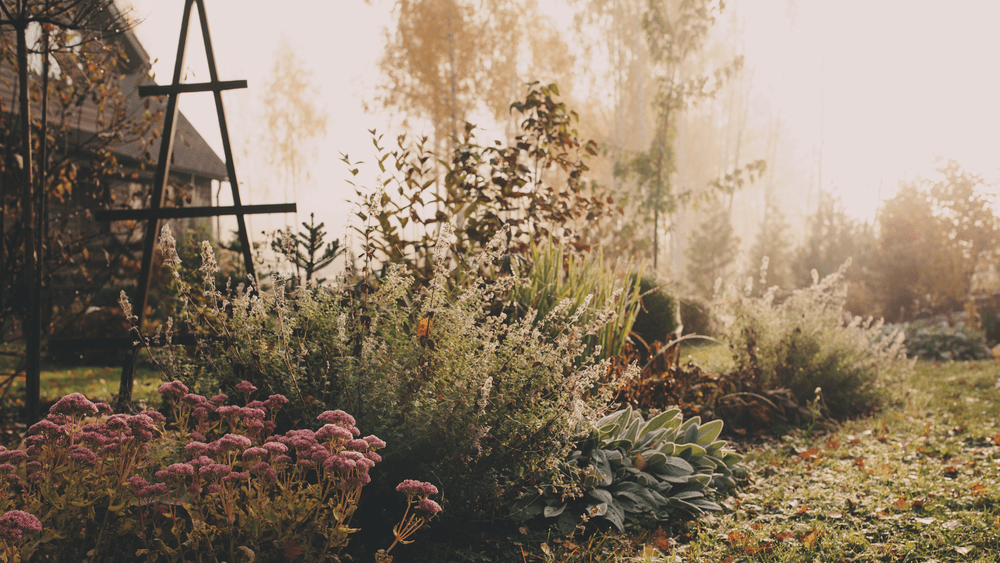
2. Select plants that delight the senses
In the winter, structural evergreens, architectural foliage, parchment- toned grasses, vibrant stark stems, beautiful barks and plump berries are the plant details you will notice the most. In addition, several shrubs have winter scents that are enhanced by the gentle warmth
of early spring sunshine. In his Vancouver landscapes, Sangha’s favourite flowering plants are viburnum (V. × bodnantense), which blooms from fall to spring, sweetly scented sweet box (Sarcococca confuse) and winter-flowering camellias. In colder climates (Zone 5), Chinese witch hazel (Hamamelis mollis) is a wonderful plant that explodes with lacy fragrant blooms in late January or early February and lasts right through until March. Plants that have fragrance are best planted in areas where you will walk by daily to enjoy them.
3. Welcome wildlife naturally
In his West Coast gardens, Sangha plants hazelnut trees for the squirrels and makes sure to add berry-bearing trees and shrubs as food for hungry birds. Some colourful favourites that can be grown in many regions across Canada include the following:
• Red chokeberry (Aronia arbutifolia)
• Winterberry (Ilex)
• Firethorn (Pyracantha)
• Snowberry (Symphoricarpos)
• Mountain ash trees (Sorbus americana)
• Rugosa roses for their stunning rosehips
How to Attract the Most Desirable Winter Birds

4. Mind the light and reflection
When the seed heads on ornamental grasses like miscanthus and Calamagrostis catch the sunlight on a winter’s day, they look magical. Add a layer of frost, and the whole landscape glows. “How the frost lands on the plants is one of the most beautiful delights of the winter garden,” says Sangha, who adds that “garden beds planted from east to west will catch the best of the morning and late-afternoon sun.” Embracing the winter light is what Sangha keeps in mind when he designs his landscapes, often adding water features and reflecting pools in Vancouver-area gardens to complement the cool blue hues in the sky and the light frosts that settle on the nearby plants. “Gardeners who don’t have the climate for moving water in their yards should think about using the reflection of the snow as a design highlight,” advises Sangha, adding that “the big sky in the Prairies that “the big sky in the Prairies offers some of the most spectacular light and shadows that should be highlighted in a winter landscape.”
5. Balance both vastness and intimacy in your space
Winter exposes the bare bones of a garden, allowing you to take a critical look and see where the gaps are — but according to Sangha, this doesn’t mean that every bare area needs to be filled. Just like how we know it’s important in interior design to arrange furniture and accessories in proportion to the size of the room, large grassy areas, meadows and patio spaces should be in harmony with the intensely planted garden areas. In the landscape, it’s the structural focal points like walls, arbours and large trees that bring personality to the landscape, and the flower beds that add the coziness.

6. Think of topography as a design tool
Understanding topography (the study of forms and features of land surfaces) and hydrology (the way water moves over the land) inspires design choices that minimize environmental impact on a landscape. In a winter garden, the addition of stones, dry rivers, landforms and movement creates levels and interest. “These are the timeless aspects of a built landscape,” says Sangha, who gets his inspiration for his designs from walking though the nature that surrounds him in his home province of British Columbia. “From Whistler to the coastal islands to the interior of B.C., the contrast of the landscapes is what I enjoy.”
7. Consider the environmental impact of your choices
Concerned about the environmental impact of your garden? Sangha recommends that you ask where the plants come from. Native species are hardier and more disease resistant, while plants grown in your local area are less susceptible to breakage and damage from heavy snow and rain. “Don’t be afraid to ask your plant seller where the material comes from,” says Sangha. “This will save you lots of time and replanting down the road.”
Where to Find Native Seeds & Plants

Jennifer Reynolds, our previous Editor-in-Chief, is a long-time authority in gardening, do-it-yourself projects, urban sustainability, parenting, placemaking and community matters. Her features and columns have been published in Canadian Living, Canadian Family, Gardening Life, House & Home, Globe & Mail, National Post, Toronto Star & more. Plus, her designs and expertise have been featured on dozens of HGTV, W Network and CTV shows.

